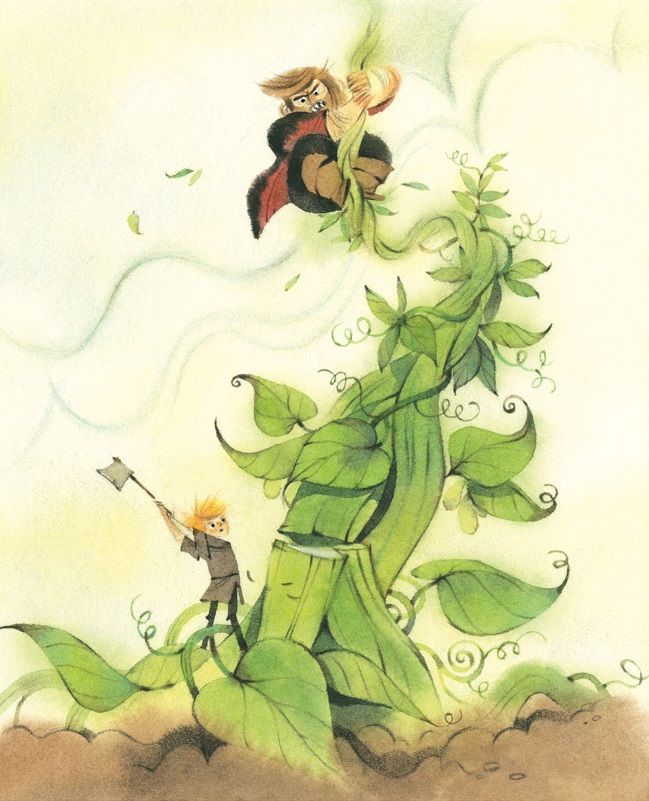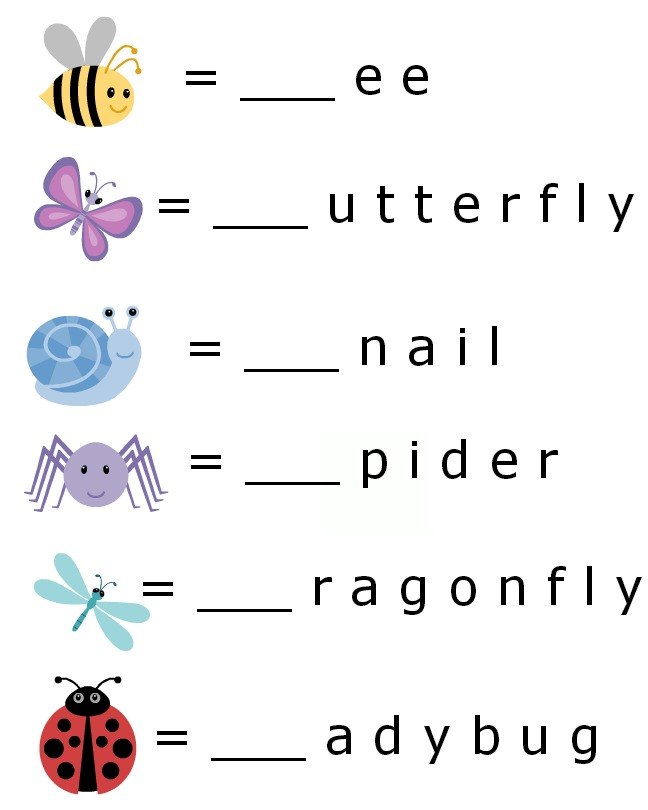Where do the wild things go
Where the Wild Things Go
CLICK FOR A NEW POEM
By D. Gilson
The night Max wore his wolf suit
made him infamous, bred the child star
never sent to bed. Middle school,
Max started drinking. Not in my house,
his mother begged, No, no, no, wild thing.
Max reminded her who bought
this condo, who paid for her meds.
Freshman year, Max raved. Roared
his terrible roar, rolled, and almost
wound up in a warehouse dead.
Where, oh where, do the wild things
go? To rehab in high school.
To college on residual book sales.
Max kept his head down. Laughed
at drunken frat boys. Bro, let the wild
rumpus start. Max said, No thanks,
and volunteered for the Peace Corps
instead. Two years in Kenya, one
in Belarus, the president thought
Max might be of some use. Max
moved to Washington, appointed
at the State Department a cultural
attaché. One important day Max wore
his wolf-gray suit, then drove home
well past rush hour in a freak snow storm.
Max drove on the deserted beltway,
thought it his throne. Yes, Max belted,
this is where the wild things roam.
Source: Poetry (May 2017)
- Arts & Sciences
- Living
- Relationships
Poet Bio
D. Gilson is an Assistant Professor of English at Texas Tech University. His essays, poetry, and scholarship explore the relationship between popular culture, literature, personal history, and sexuality. See More By This Poet
More By This Poet
Harold & the Purple Crayon
Berkeley psychologists told Harold
his anger was justified. What parents
let their child go for a midnight walk
under no moon? I couldn’t have
been more than four, Harold told
the doctor in her crisp beige office.
Doctor, could it ever be OK
for a four-year-old to...
By D. Gilson
- Arts & Sciences
- Living
- Relationships
More Poems about Arts & Sciences
The Racist Bone
I know this is a real thing, because
When I was a kid, my big sister took me
To the Capitol Theater, in my hometown
Of Rochester, NY,
And there was a movie that afternoon,
The Tingler, which starred Vincent Price,
And what I remember best...
By Cornelius Eady
- Arts & Sciences
- Living
- Social Commentaries
The Last Word
I am a door of metaphor
waiting to be opened.
You’ll find no lock, no key.
All are free to enter, at will.
Simply step over the threshold.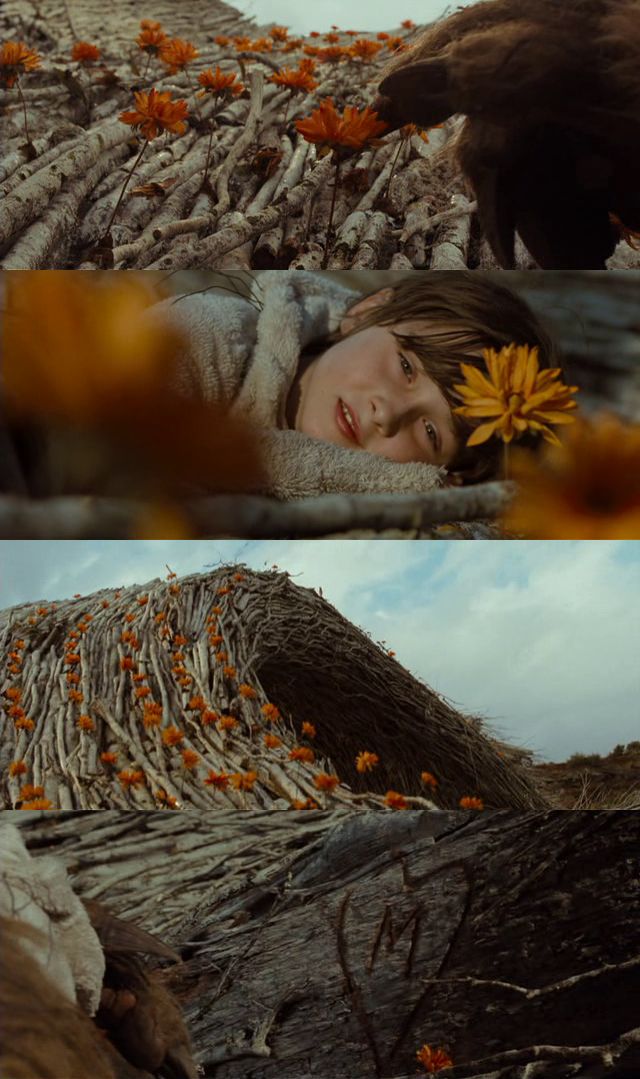
Remember to dress for travel, though.
Visitors have been known
to get carried away.Illustration by Shadra Strickland
By Nikki Grimes
- Arts & Sciences
More Poems about Living
if time is queer/and memory is trans/and my hands hurt in the cold/then
there are ways to hold pain like night follows day
not knowing how tomorrow went down.
it hurts like never when the always is now,
the now that time won't allow.
there is no manner of tomorrow, nor shape of today
only like always having...
By Raquel Salas Rivera
- Living
- Social Commentaries
Here’s an Ocean Tale
My brother still bites his nails to the quick,
but lately he’s been allowing them to grow.
So much hurt is forgotten with the horizon
as backdrop. It comes down to simple math.
It comes down to simple math.
The beach belongs to none of us, regardless
of color, or money....
By Kwoya Fagin Maples
- Activities
- Living
- Nature
More Poems about Relationships
Here’s an Ocean Tale
My brother still bites his nails to the quick,
but lately he’s been allowing them to grow.
So much hurt is forgotten with the horizon
as backdrop. It comes down to simple math.
The beach belongs to none of us, regardless
of color, or money....
By Kwoya Fagin Maples
- Activities
- Living
- Nature
Grain Memory
A wishbone branch falls
from my Grandma Thelma’s oak
for me.
What do you know about magic? e1 asks.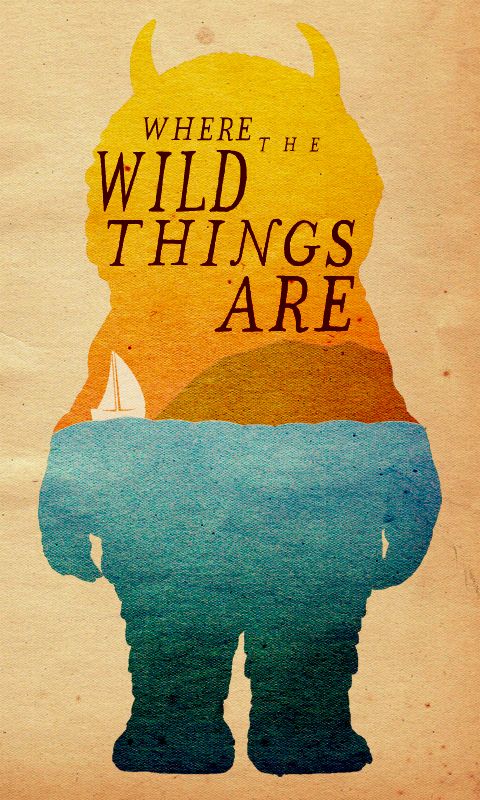
E bends e old body down, turns
the wishbone branch into
a cross, places it around my neck.
I am strapped at the Black River’s right shoulder,
remembering my...
By Marlanda Dekine
- Living
- Relationships
- Social Commentaries
Where the Wild Things Are (2009)
- Cast & crew
- User reviews
- Trivia
IMDbPro
- 20092009
- PGPG
- 1h 41m
IMDb RATING
6.7/10
105K
YOUR RATING
POPULARITY
Play trailer2:33
13 Videos
99+ Photos
AdventureDramaFamily
Yearning for escape and adventure, a young boy runs away from home and sails to an island filled with creatures that take him in as their king.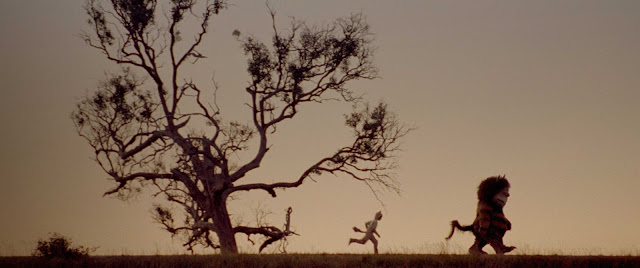 Yearning for escape and adventure, a young boy runs away from home and sails to an island filled with creatures that take him in as their king.Yearning for escape and adventure, a young boy runs away from home and sails to an island filled with creatures that take him in as their king.
Yearning for escape and adventure, a young boy runs away from home and sails to an island filled with creatures that take him in as their king.Yearning for escape and adventure, a young boy runs away from home and sails to an island filled with creatures that take him in as their king.
IMDb RATING
6.7/10
105K
YOUR RATING
POPULARITY
- Director
- Spike Jonze
- Writers
- Spike Jonze(screenplay)
- Dave Eggers(screenplay)
- Maurice Sendak(book)
- Stars
- Max Records
- Catherine O'Hara(voice)
- Forest Whitaker(voice)
- Director
- Spike Jonze
- Writers
- Spike Jonze(screenplay)
- Dave Eggers(screenplay)
- Maurice Sendak(book)
- Stars
- Max Records
- Catherine O'Hara(voice)
- Forest Whitaker(voice)
- 460User reviews
- 346Critic reviews
- 71Metascore
- Awards
- 7 wins & 54 nominations
Videos13
Trailer 2:33
Watch Where the Wild Things Are -- Trailer #2
Trailer 2:07
Watch Where the Wild Things Are: Trailer #1
Clip 1:21
Watch Where The Wild Things Are
Clip 1:33
Watch Where The Wild Things Are
Clip 1:34
Watch Where The Wild Things Are
Clip 1:32
Watch Where The Wild Things Are
Clip 1:25
Watch Where The Wild Things Are
Featurette 2:26
Watch Where the Wild Things Are -- International Featurette
Featurette 3:17
Watch Where the Wild Things Are -- Maurice Sendak and Spike Jones Featurette
Interview 0:33
Watch Where The Wild Things Are
Interview 0:36
Watch Where The Wild Things Are
Interview 0:28
Watch Where The Wild Things Are
Photos112
Top cast
Max Records
Catherine O'Hara
- Judith
- (voice)
Forest Whitaker
- Ira
- (voice)
Pepita Emmerichs
- Claire
Max Pfeifer
- Claire's Friend
Madeleine Greaves
- Claire's Friend
Joshua Jay
- Claire's Friend
Ryan Corr
- Claire's Friend
Catherine Keener
Steve Mouzakis
- Teacher
Mark Ruffalo
- The Boyfriend
James Gandolfini
- Carol
- (voice)
Vincent Crowley
- Carol Suit Performer
Paul Dano
- Alexander
- (voice)
Sonny Gerasimowicz
- Alexander Suit Performer
Nick Farnell
- Judith Suit Performer
Sam Longley
- Ira Suit Performer
Michael Berry Jr.
- The Bull
- (voice)
- Director
- Spike Jonze
- Writers
- Spike Jonze(screenplay)
- Dave Eggers(screenplay)
- Maurice Sendak(book)
- All cast & crew
- Production, box office & more at IMDbPro
More like this
Where the Wild Things Are
A Series of Unfortunate Events
Hugo
Coraline
Rango
Bridge to Terabithia
ParaNorman
Fantastic Mr. Fox
Fox
A Monster Calls
The Spiderwick Chronicles
Corpse Bride
Legend of the Guardians: The Owls of Ga'Hoole
Storyline
Did you know
- Quotes
Douglas: Will you keep out all the sadness?
Max: I have a sadness shield that keeps out all the sadness, and it's big enough for all of us.
- Connections
Featured in The Rotten Tomatoes Show: Duplicity/Knowing/I Love You, Man (2009)
User reviews460
Review
Featured review
8/
10
Beautiful to watch with a great story
Where the Wild Things are is not perfect, it is a little too long and sometimes rather slow too, though in regard to the latter the pacing may have been deliberate. But it is a very effective adaptation of a great story. Where the Wild Things Are is beautiful to watch, the cinematography is spellbinding, while the sceneries, character movements and colours are mesmerising for the visual senses. The soundtrack adds to the mood wonderfully, it never feels intrusive or generic, instead it is a poignant and reflective soundtrack.
But it is a very effective adaptation of a great story. Where the Wild Things Are is beautiful to watch, the cinematography is spellbinding, while the sceneries, character movements and colours are mesmerising for the visual senses. The soundtrack adds to the mood wonderfully, it never feels intrusive or generic, instead it is a poignant and reflective soundtrack.
The story is a beautiful and affecting one, with a touch of weirdness perhaps, and the writing is very good that doesn't jar with the film's tone. The characters also add to the film's success, I can understand why people can't warm to Max but he is a complex character, I found him easy to relate to and is written adeptly. The supporting characters are weird but in a wonderful way, while the voice acting and acting are terrific especially from Max Records who is just exceptional. Overall, a beautiful, poignant and haunting film, depressing it is but that was intentional. 8/10 Bethany Cox
helpful•9
6
- TheLittleSongbird
- Mar 6, 2011
Is "Where the Wild Things Are" based on a book?
Is this movie animated?
How closely does the movie follow the book?
Details
- Release date
- October 16, 2009 (United States)
- Countries of origin
- Germany
- United States
- Australia
- Official sites
- Official Facebook
- Warner Bros.
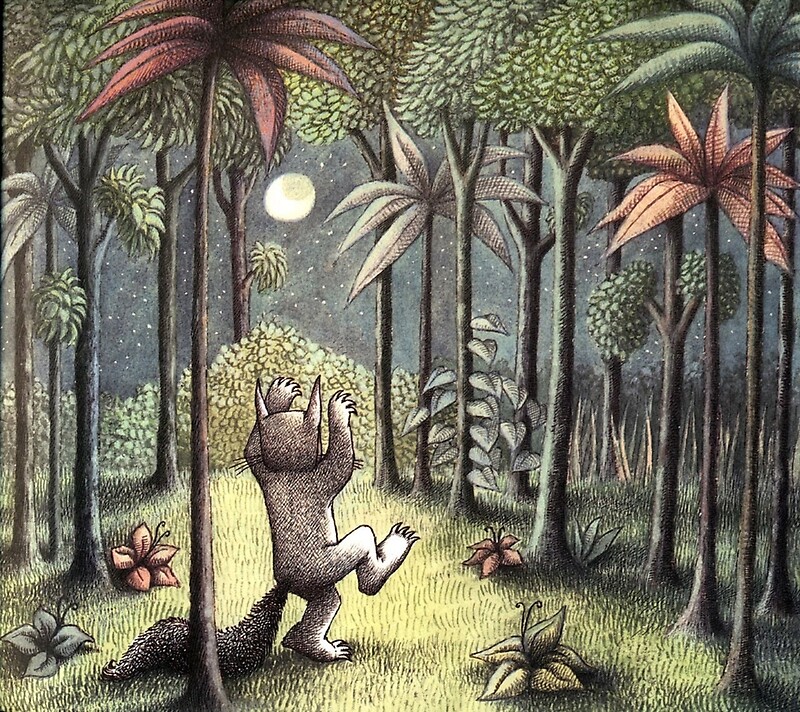 (France)
(France)
- Language
- English
- Also known as
- More Rice
- Filming locations
- Flinders, Victoria, Australia
- Production companies
- Warner Bros.
- Legendary Entertainment
- Village Roadshow Pictures
- See more company credits at IMDbPro
Box office
- Budget
- $100,000,000 (estimated)
- Gross US & Canada
- $77,233,467
- Opening weekend US & Canada
- $32,695,407
- Oct 18, 2009
- Gross worldwide
- $100,140,916
Technical specs
- Runtime
1 hour 41 minutes
- Color
- Sound mix
- Dolby Digital
- SDDS
- DTS
- Aspect ratio
- 2.
 39 : 1
39 : 1
- 2.
Related news
Contribute to this page
Suggest an edit or add missing content
Top Gap
What is the Japanese language plot outline for Where the Wild Things Are (2009)?
Answer
More to explore
Recently viewed
You have no recently viewed pages
Modern savagery Primitive tribes that have survived to this day: Science and technology: Lenta.ru
They do not know what a car, electricity, a hamburger and the United Nations are. They get their food by hunting and fishing, they believe that the gods send rain, they do not know how to write and read. They may die from catching a cold or the flu. They are a godsend for anthropologists and evolutionists, but they are dying out. They are wild tribes that have preserved the way of life of their ancestors and avoid contact with the modern world.
Sometimes the meeting happens by chance, and sometimes the scientists are specifically looking for them. For example, on Thursday, May 29, in the Amazon jungle near the Brazilian-Peruvian border, several huts were found surrounded by people with bows who tried to shoot at the plane with the expedition. In this case, specialists from the Peruvian Center for Indian Tribes flew around the jungle in search of savage settlements.
For example, on Thursday, May 29, in the Amazon jungle near the Brazilian-Peruvian border, several huts were found surrounded by people with bows who tried to shoot at the plane with the expedition. In this case, specialists from the Peruvian Center for Indian Tribes flew around the jungle in search of savage settlements.
Although recently scientists rarely describe new tribes: most of them have already been discovered, and there are almost no unexplored places on Earth where they could exist.
Wild tribes live in South America, Africa, Australia and Asia. According to rough estimates, there are about a hundred tribes on Earth that do not or rarely come into contact with the outside world. Many of them prefer to avoid interaction with civilization by any means, so it is quite difficult to keep an accurate record of the number of such tribes. On the other hand, tribes that willingly communicate with modern people gradually disappear or lose their identity. Their representatives gradually assimilate our way of life or even go to live "in the big world.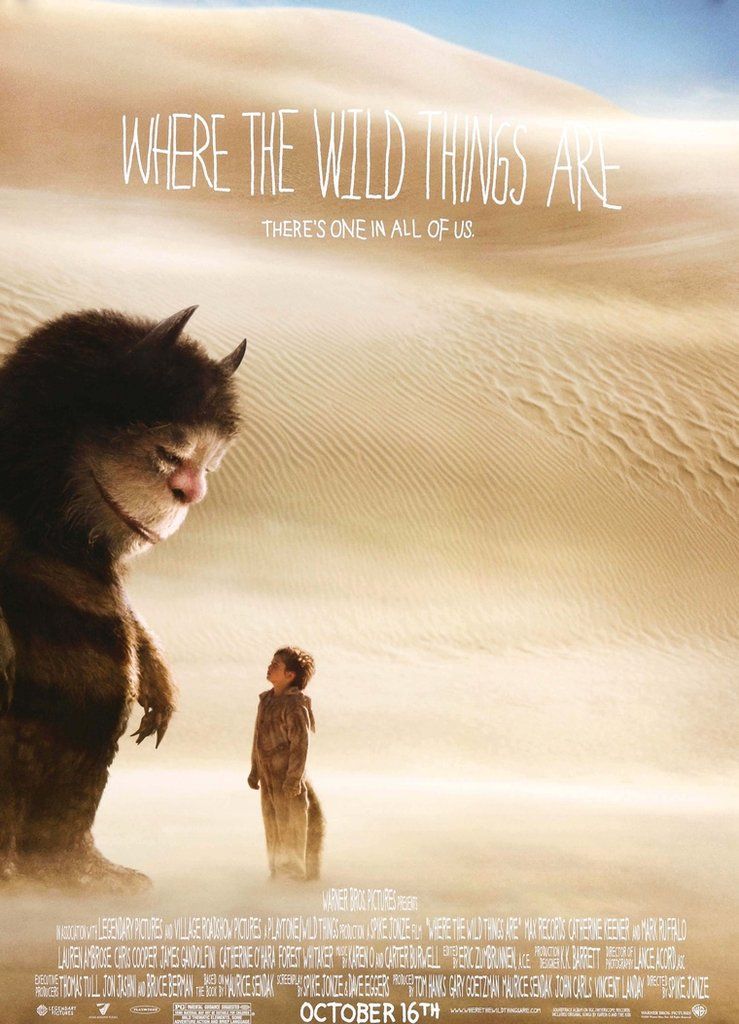 "
"
Another obstacle that hinders the full study of tribes is their immune system. "Modern savages" have long developed in isolation from the rest of the world. The most common diseases for most people, such as a runny nose or flu, can be fatal for them. In the body of savages there are no antibodies against many common infections. When the flu virus strikes a person from Paris or Mexico City, his immune system immediately recognizes the "attacker" because it has already met him before. Even if a person has never had the flu, immune cells "trained" for this virus enter his body from his mother. The savage is practically defenseless against the virus. As long as his body can develop an adequate "response", the virus may well kill him.
But lately the tribes have been forced to change their habitual habitats. The development of new territories by modern man and the deforestation where savages live, force them to found new settlements. In the event that they are close to the settlements of other tribes, conflicts may arise between their representatives. And again, cross-contamination with diseases typical of each tribe cannot be ruled out. Not all tribes were able to survive when faced with civilization. But some manage to maintain their numbers at a constant level and not succumb to the temptations of the "big world".
And again, cross-contamination with diseases typical of each tribe cannot be ruled out. Not all tribes were able to survive when faced with civilization. But some manage to maintain their numbers at a constant level and not succumb to the temptations of the "big world".
Be that as it may, anthropologists have managed to study the way of life of some tribes. Knowledge about their social structure, language, tools, creativity and beliefs helps scientists to better understand how human development went. In fact, each such tribe is a model of the ancient world, representing possible options for the evolution of culture and thinking of people.
Piraha
Piraha tribe lives in the Brazilian jungle, in the valley of the Meiki River. There are about two hundred people in the tribe, they exist thanks to hunting and gathering and actively resist the introduction into the "society". Pirahã is distinguished by unique features of the language. First, there are no words for color shades. Secondly, the Pirahã language lacks the grammatical constructions necessary for the formation of indirect speech. Thirdly, Pirahã people do not know the numerals and the words "more", "several", "all" and "each".
Secondly, the Pirahã language lacks the grammatical constructions necessary for the formation of indirect speech. Thirdly, Pirahã people do not know the numerals and the words "more", "several", "all" and "each".
One word, but pronounced with different intonation, serves to represent the numbers "one" and "two". It can also mean "about one" and "not very many". Due to the lack of words for numbers, Pirahãs cannot count and cannot solve simple mathematical problems. They are unable to estimate the number of objects if there are more than three. At the same time, there are no signs of a decrease in intelligence in the Piraha. According to linguists and psychologists, their thinking is artificially limited by the peculiarities of the language.
Pirahãs have no creation myths, and a strong taboo forbids them from talking about things that are not part of their own experience. Despite this, Pirahas are quite sociable and capable of organized activities in small groups.
Sinta larga
Tribal faces: portraits of primeval beauty
Lenta. ru
The Sinta larga tribe also lives in Brazil. Once the number of the tribe exceeded five thousand people, but now it has decreased to one and a half thousand. The minimum social unit of the Sinta Larga is the family: a man, several of his wives and their children. They can move freely from one settlement to another, but more often establish their own home. Sinta larga are engaged in hunting, fishing and farming. When the land where their house stands becomes less fertile or game leaves the forests, the Sinta spotted seals move out and look for a new site for the house.
Each sinth larga has several names. One - "real name" - each member of the tribe keeps a secret, only the closest relatives know it. During the life of the Sinta Larga, they receive several more names, depending on their individual characteristics or important events that happened to them. The Sinta Larga society is patriarchal, male polygamy is widespread in it.
Sinta larga has been heavily affected by contact with the outside world.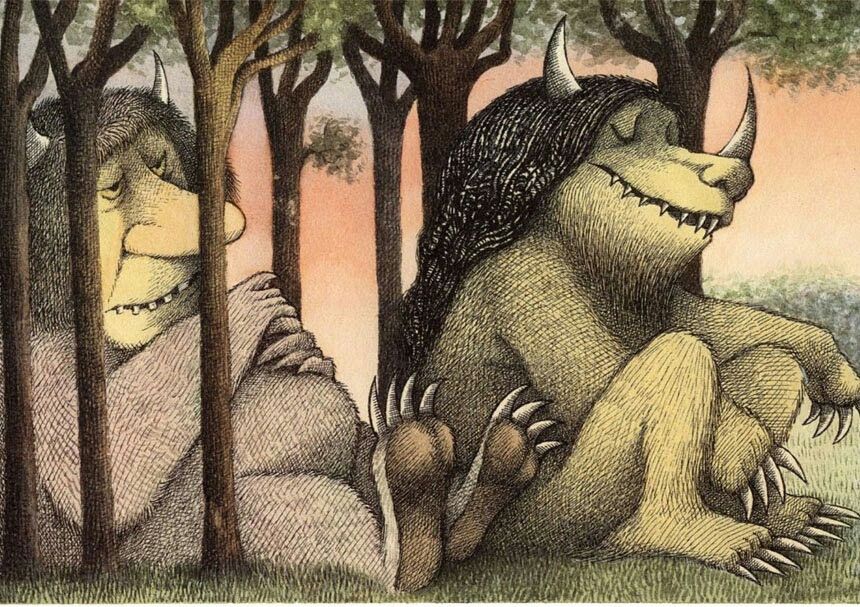 In the jungle where the tribe lives, many rubber trees grow. Rubber collectors systematically exterminated the Indians, claiming that they interfere with their work. Later, diamond deposits were discovered in the territory where the tribe lived, and several thousand miners from all over the world rushed to develop the land of Sinta Larga, which is illegal. The members of the tribe themselves also tried to mine diamonds. Conflicts often arose between savages and diamond lovers. In 2004 29miners were killed by Sinta Larga people. After that, the government allocated $810,000 to the tribe in exchange for a promise to close the mines, allow them to set up police cordons near them, and not engage in stone mining on their own.
In the jungle where the tribe lives, many rubber trees grow. Rubber collectors systematically exterminated the Indians, claiming that they interfere with their work. Later, diamond deposits were discovered in the territory where the tribe lived, and several thousand miners from all over the world rushed to develop the land of Sinta Larga, which is illegal. The members of the tribe themselves also tried to mine diamonds. Conflicts often arose between savages and diamond lovers. In 2004 29miners were killed by Sinta Larga people. After that, the government allocated $810,000 to the tribe in exchange for a promise to close the mines, allow them to set up police cordons near them, and not engage in stone mining on their own.
Tribes of the Nicobar and Andaman Islands
The group of Nicobar and Andaman Islands is located 1400 kilometers from the coast of India. Six primitive tribes lived in complete isolation on the outlying islands: the great Andamanese, the Onge, the Jarawa, the Shompens, the Sentinelese, and the Negrito.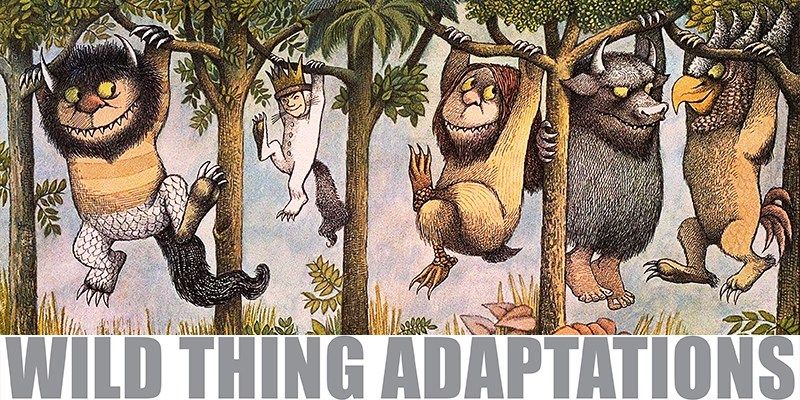 After the devastating 2004 tsunami, many feared that the tribes had disappeared forever. However, later it turned out that most of them, to the great joy of anthropologists, escaped.
After the devastating 2004 tsunami, many feared that the tribes had disappeared forever. However, later it turned out that most of them, to the great joy of anthropologists, escaped.
The tribes of the Nicobar and Andaman Islands are in the Stone Age in their development. Representatives of one of them - Negrito - are considered the most ancient inhabitants of the planet, preserved to this day. The average height of a Negrito is about 150 centimeters, and even Marco Polo wrote about them as "cannibals with dog muzzles."
Korubo
Cannibalism is a fairly common practice among primitive tribes. And although most of them prefer to find other sources of food, some have retained this tradition. For example, Korubo living in the western part of the Amazon Valley. The Korubo are an extremely aggressive tribe. Hunting and raiding neighboring settlements are their main means of subsistence. The korubo's weapons are heavy clubs and poison darts. Korubo do not practice religious rites, but they have a widespread practice of killing their own children.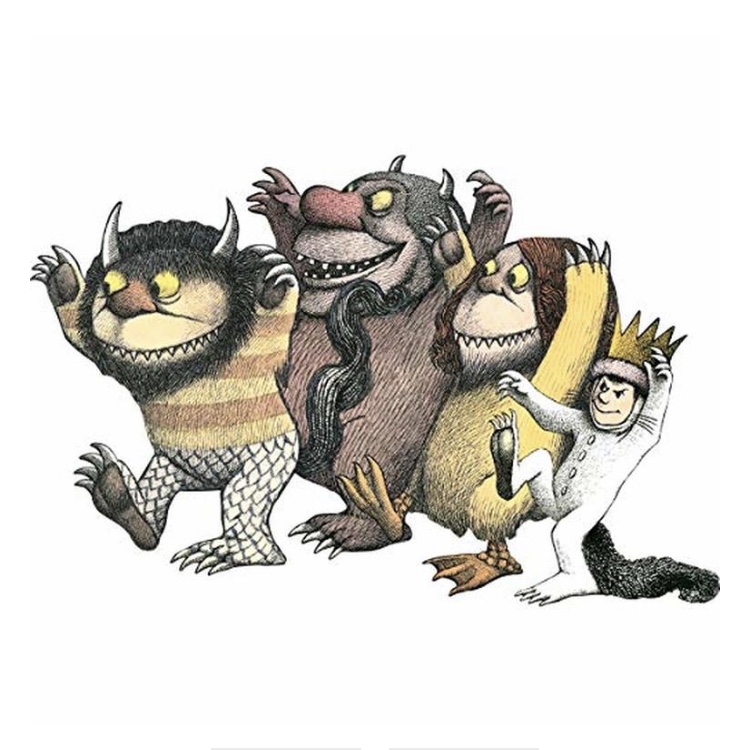 Korubo women have equal rights with men.
Korubo women have equal rights with men.
Cannibals from Papua New Guinea
The most famous cannibals are perhaps the tribes of Papua New Guinea and Borneo. Cannibals of Borneo are cruel and promiscuous: they eat both their enemies and tourists or old people from their tribe. The last surge of cannibalism was noted in Borneo at the end of the past - the beginning of this century. This happened when the Indonesian government tried to colonize some areas of the island.
In New Guinea, especially in its eastern part, cases of cannibalism are observed much less frequently. Of the primitive tribes living there, only three - the Yali, the Vanuatu and the Carafai - still practice cannibalism. The most cruel is the Carafai tribe, while the Yali and Vanuatu eat someone on rare solemn occasions or out of necessity. The Yalis are also famous for their festival of death, when the men and women of the tribe paint themselves in the form of skeletons and try to appease Death. Previously, for fidelity, they killed the shaman, whose brain was eaten by the leader of the tribe.
Previously, for fidelity, they killed the shaman, whose brain was eaten by the leader of the tribe.
Emergency reserve
The dilemma of primitive tribes is that attempts to study them often lead to their destruction. Anthropologists and travelers alike find it hard to give up the prospect of going back to the Stone Age. In addition, the habitat of modern people is constantly expanding. Primitive tribes managed to carry their way of life through many millennia, however, it seems that in the end, savages will join the list of those who could not stand the meeting with modern man.
One Way Two girls suddenly disappeared into the jungle. Their mysterious death remains a mystery for years: Incidents: From life: Lenta.ru
Every day people disappear without a trace in the world. Some manage to be found and returned home, but there are many more tragic stories. Each accident becomes a huge loss for loved ones, and sometimes for entire countries and continents. A few years ago, the world was shocked by the disappearance of two girls from the Netherlands who went to Panama to study Spanish. Friends Lisanne Fron and Chris Kremers seemed to have evaporated in the middle of a popular Latin American route traveled by thousands of tourists. After some time, local residents found their things, and later - the remains of the bodies without signs of violence. Numerous investigations conducted by law enforcement officers did not clarify the fate of the girls in any way, but only made a mess. What could have happened in the spring of 2014 on the El Pianista route, why other people's fingerprints remained on the personal belongings of the missing, and why their phones lived their own lives for about two more weeks - in the material of Lenta.ru.
A few years ago, the world was shocked by the disappearance of two girls from the Netherlands who went to Panama to study Spanish. Friends Lisanne Fron and Chris Kremers seemed to have evaporated in the middle of a popular Latin American route traveled by thousands of tourists. After some time, local residents found their things, and later - the remains of the bodies without signs of violence. Numerous investigations conducted by law enforcement officers did not clarify the fate of the girls in any way, but only made a mess. What could have happened in the spring of 2014 on the El Pianista route, why other people's fingerprints remained on the personal belongings of the missing, and why their phones lived their own lives for about two more weeks - in the material of Lenta.ru.
Great expectations
Lisanne Frohn and Chris Kremers were born in Amersfoort, Holland. Lisanne, 22, was a year older than her friend. Both are remembered by friends and family as smart, energetic and open-minded optimists. A trip to exotic Panama was a graduation present for Fron, who received her psychology degree from Deventer. Her parents gave her some money for vacation. Kremers was then still studying art at the University of Utrecht.
A trip to exotic Panama was a graduation present for Fron, who received her psychology degree from Deventer. Her parents gave her some money for vacation. Kremers was then still studying art at the University of Utrecht.
The girls worked together for several months at the restaurant In den Kleinen Hap, setting aside personal funds for a dream trip, during which they planned not only to relax, but also to learn Spanish and engage in social volunteering to help local residents with children.
In March, Frohn and Kremers flew out of Amsterdam airport on an adventure. The first destination was Bocas del Toro: there the girls learned the language, enjoyed the local cuisine and the Caribbean Sea, wrote big joyful messages about local beauties to friends and family. Kremers got an exotic Facebook avatar: kneeling in the water, she holds a real starfish in her hands.
After a few weeks of rest, they headed towards the volcanic mountain of Baru, a grandiose hill, in the vicinity of which the tourist town of Boquete, surrounded by jungle, is located. There they planned to stay the rest of the holidays.
There they planned to stay the rest of the holidays.
The Dutch women successfully reached Boquete and settled in the accommodation prepared in advance for them. Here, their plans changed: initially, the students planned to learn the language and work with local students, but the local administration told them that this was not yet possible.
Locals who met the girls that day recall that they looked upset and disappointed. However, there was still an opportunity to help poor families in the Alto Boquet area, and then Fron and Kremers decided not to change plans and stay in Panama for another month
According to some reports, they were asked to come back and discuss all the terms after a few days. Travelers, apparently, decided not to waste time and take advantage of an unexpected pause for new adventures. This decision marked the beginning of a confusing and strange story in which no one's testimony agrees with any evidence.
Short road
On the morning of April 1, 2014, the weather was fine in Boquete. Chris and Lysanne chose this day to walk along the famous local trail La Pianista, located about eight kilometers from the city. The girls put on T-shirts and shorts, took a light backpack, where they put the essentials (passports, a bottle of water and some money - about $ 80), mobile phones and a camera. It is this technique that will then speak more eloquently than all the police and detectives.
Chris and Lysanne chose this day to walk along the famous local trail La Pianista, located about eight kilometers from the city. The girls put on T-shirts and shorts, took a light backpack, where they put the essentials (passports, a bottle of water and some money - about $ 80), mobile phones and a camera. It is this technique that will then speak more eloquently than all the police and detectives.
They got to the start of the route by taxi - according to the driver, around noon. However, according to the metadata of the photographs taken, they actually started climbing an hour earlier. At the same time, the police will have at their disposal the testimony of the owner of the cafe, located at the beginning of the route, who talked with two girls who looked like Dutch girls at about three in the afternoon, and they went for a walk after that. Also, his employees claimed that Fron and Kremers took a guide dog, which returned alone. But it is impossible to prove this, since the dog did not get into any of the pictures.
Tourists usually need five to six hours to walk along La Pianista - the trail is arranged as an ascent and descent from the hill, the road takes two and a half or three hours one way. Despite the fact that the route is considered famous and dozens of people walk along it every day, even the locals do not risk leaving the trail: the surrounding area is dangerous due to the steep terrain, especially during the rainy season (from April to October) - at this time, even living since ancient times in these places, the Ngobe tribe walks the trail with caution. The trail runs from the state of Chiriqui to the province of Bocas del Toro, crossing gorges more than 20 meters deep, which must be crossed by cable bridges.
Fron and Kremers reached the summit at about 1 pm: at that time the girls took a photo on the picturesque viewpoint El Mirador on the top of the hill. Usually, tourists end their walk there and go back, however, most likely, the Dutch women wanted to continue the hike and look at the waterfall in the jungle, located on the continuation of the route in an almost wild area. A few days earlier, they had searched the web for a map of this landscape and studied it carefully.
A few days earlier, they had searched the web for a map of this landscape and studied it carefully.
However, the female students were lightly dressed and took almost nothing with them: they had neither food, nor enough water, nor special means for rescue and survival. Tourists usually take tents, special clothes and equipment for long trips with them and turn to professional guides
Travelers turned to the local guide Feliciano Gonzalez just for a trip to the local national park, which was scheduled for the next day. It was he who first realized that something had happened when the girls did not get in touch. He turned to the family from whom they rented housing, and then to the police. On April 3, Kremers and Fron were declared missing.
In search of the missing girls
Photo: Carlos Jasso / Reuters
The unprecedented search continued for several weeks: at first the girls were searched for by the police, cynologists and local residents, soon they were joined by Dutch colleagues and relatives of the missing. It seemed that the travelers seemed to have evaporated, leaving no trace of their presence and any things. It is also extremely strange that two witnesses claimed to have seen the girls return from the La Pianista route and were looking for an opportunity to get to the city. However, apart from these two, no one else reported the return of Fron and Kremers.
It seemed that the travelers seemed to have evaporated, leaving no trace of their presence and any things. It is also extremely strange that two witnesses claimed to have seen the girls return from the La Pianista route and were looking for an opportunity to get to the city. However, apart from these two, no one else reported the return of Fron and Kremers.
Unexpected finds
In June 2014, ten weeks after the mysterious disappearance of tourists, in a field near the settlement of Alta Romero, locals found a backpack - the same one with which the Dutch women took a walk along the route. From where they were last seen alive to this field, it would take hours on foot. It also seemed strange that the backpack was in fact in perfect condition, all its contents remained safe and sound and did not even get wet (this completely ruled out the assumption that it was brought by the current along a mountain river). The backpack contained a foreign passport in the name of Chris Kremers, an insurance medical card in the name of Lisanne Fron, 83 US dollars, the girls' sunglasses, their bras and mobile phones, a water bottle and a camera.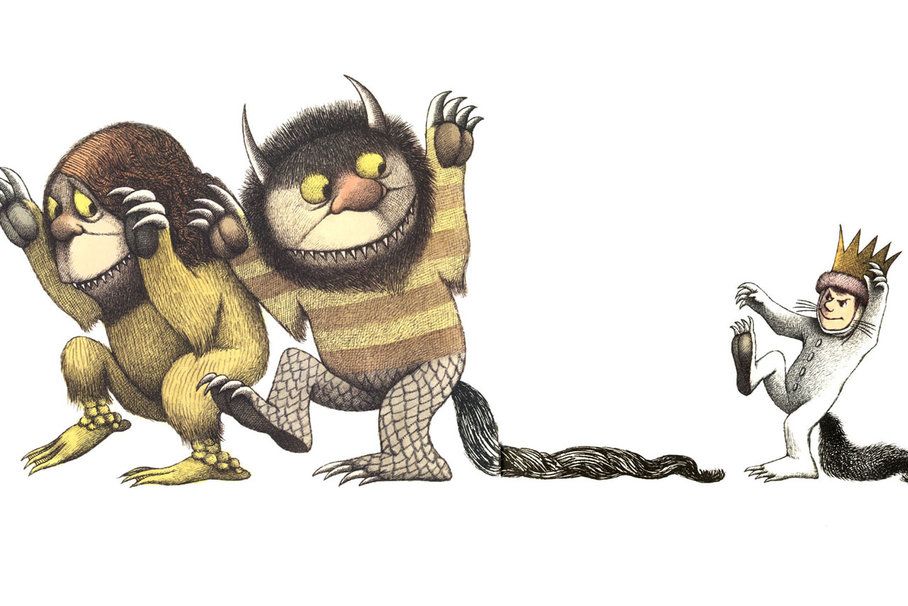
At the same time, heavy rains hit the country in May, from which a backpack left in the jungle could not fail to suffer. The DNA of different people was found on it, but it was impossible to determine for sure whether they got there before the disappearance of the girls or after. More than a dozen different fingerprints were found on mobile phones and a camera. Some were repeated. Soon another thing was found - Kremers shorts, which lay neatly folded and zipped on a rock between two fast mountain streams.
The main piece of evidence was a camera found in a backpack, on which 133 consecutive pictures were found. Only one photo is missing from the series, and it is not clear who deleted it, as it has not been possible to restore it (if you manually delete the photo, you can restore it).
Most of them are portraits of smiling girls taken on the first of April during a walk along the route, and the landscapes surrounding them. Only the picture taken at 18:40 seems strange: in it Kremers has a very worried face. Some of the pictures were taken in the "wild" part of the route, which confirms the hypothesis that after climbing the girls went down an unfamiliar descent. According to some reports, on the other side there are many huts and dugouts not marked on the map. Who lives there, even experienced guides do not know.
Some of the pictures were taken in the "wild" part of the route, which confirms the hypothesis that after climbing the girls went down an unfamiliar descent. According to some reports, on the other side there are many huts and dugouts not marked on the map. Who lives there, even experienced guides do not know.
The strangest were 90 photographs taken on April 8 between 1 am and 4 am, in complete darkness, when there was heavy rain in the area. According to the saved metadata, only a few seconds elapsed between some shots. Some of the photos were clearly taken on purpose, as they weren't even blurry. A number of experts suggest that Fron and Kremers tried to use the flash as a light source, but it is unlikely that it will be possible to know for sure. Most of the photos show ravines, gorges, rope bridges. One of the shots is a close-up of Kremers' head, showing blood on her temple.
Mobile phones were an even more important find, but their careful examination also yielded more mysteries than answers. According to Kremers' smartphone call log, she had been trying to contact emergency services on the Dutch emergency number 112 as early as April 1 while walking down El Pianista. Fron tried the same thing a few minutes later. However, both calls did not go through, because there was no network coverage in the place where the girls were. The girls tried to call the rescuers, but in vain. By April 6, Fron's phone stopped working (probably the battery was dead), Kremers smartphone worked for several more days. It is known that on the same day someone tried to access it, but entered the PIN incorrectly. According to the investigation, from April 7 to 10, 77 attempts were made to enter a PIN code, but all of them were unsuccessful.
According to Kremers' smartphone call log, she had been trying to contact emergency services on the Dutch emergency number 112 as early as April 1 while walking down El Pianista. Fron tried the same thing a few minutes later. However, both calls did not go through, because there was no network coverage in the place where the girls were. The girls tried to call the rescuers, but in vain. By April 6, Fron's phone stopped working (probably the battery was dead), Kremers smartphone worked for several more days. It is known that on the same day someone tried to access it, but entered the PIN incorrectly. According to the investigation, from April 7 to 10, 77 attempts were made to enter a PIN code, but all of them were unsuccessful.
Last leg
In June, locals found not only the shorts of one of the Dutch women (14 hours walk from the field where the backpack was found), but also shoes (two different boots). On June 19, the remains of Lisanne Fron were found - the left leg with numerous fractures of the metatarsal bones, shod in a boot. According to the forensic medical examination, there were no signs of violence on the remains - no cuts, no marks of weapons, no imprints of teeth or claws.
According to the forensic medical examination, there were no signs of violence on the remains - no cuts, no marks of weapons, no imprints of teeth or claws.
Missing girls billboard
Photo: Carlos Jasso / Reuters
At least 33 body fragments were later found scattered on the river bank, near the rope bridge, which was allegedly captured in night photographs taken by the girls. Many of the remains were several kilometers apart, all along the river. Parts of a pelvic bone were also found, and a DNA test confirmed that these were the remains of Chris Kremers.
Some remains were discovered at the end of August. According to the conclusion of the pathologists, the fragments were in an extremely atypical condition: a piece of skin from Fron's lower leg was in the stage of decomposition, and the femur and tibia were in an absolutely perfect, actually living condition. Experts admitted that it was no coincidence that someone could deliberately do something with the remains of the girl. At the same time, Kremers' bones were in a completely different state - they were completely discolored.
At the same time, Kremers' bones were in a completely different state - they were completely discolored.
The case of the death of two Dutch students in Panama is still considered controversial. In the Netherlands, they tend to consider what happened as an accident, but local law enforcement officers do not exclude the violent death of girls
Criminalists failed to come to a common conclusion. Now officials tend to claim that the girls are lost. Kremers was then injured in a fall from a height, and Fron nursed her until she, too, had an accident. A version was worked out that the girls were attacked by a cougar, a snake or another wild animal.
Indeed, it is extremely difficult to survive in the dangerous conditions of the jungle, especially at night, especially since the uneven terrain does not contribute to a safe hike. However, the situation with a backpack found in perfect condition (and all valuables) at such a distance from the place of the official death of the girls and the casual investigation of the circumstances of the case continue to raise questions from many people around the world.




